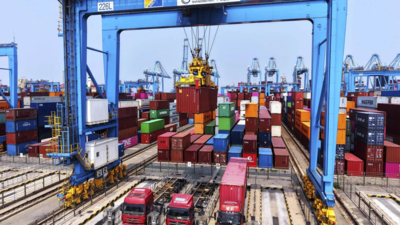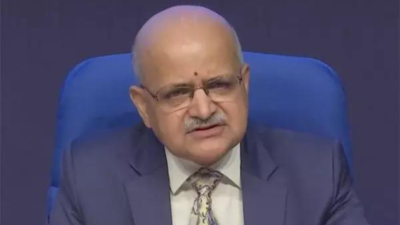Donald Trump’s reciprocal tariffs send global shockwaves, but India may be among least vulnerable – explained in charts
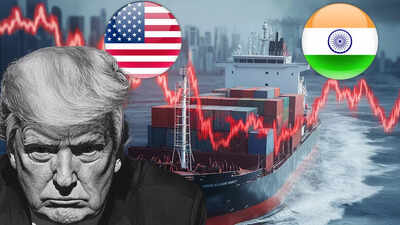
US President Donald Trump has sent shockwaves around the world, and in the US too, with his announcement of reciprocal tariffs on major world economies. Starting April 5, 2025, the United States shall enforce a uniform 10% duty on all incoming foreign goods.
And from April 9, America will transition to a matching tariff framework, applying import levies equal to those charged by other nations on American exports.
For Indian goods, this translates to a 26% duty, which aligns with rates for the EU (20%) and Japan (25%). However, these figures remain considerably below the rates set for China (54%), Vietnam (46%), Sri Lanka (44%), and Bangladesh (37%).
Global markets are in shock and turmoil – and the big question is – will the global economy plunge into recession with Trump’s trade war? In all this uncertainty, where is India placed? What do the 26% reciprocal tariffs mean for the Indian economy? We take a look at how India may actually be among the least vulnerable economies, and what’s the relative advantage that may work in India’s favour:
India among least vulnerable? The per household impact explained
An article in The Conversation by Niven Winchester analyses the possible impact of the reciprocal tariffs on the GDP of major countries around the world, including the US.
He follows a comprehensive global framework that analyses the manufacturing, commerce and utilisation of products and services to evaluate the consequences of this reciprocal trade conflict.
Also Read | Donald Trump announces 26% ‘discounted’ reciprocal tariff on India: What will be the impact and is Indian economy relatively insulated?
In the first scenario, it is assumed that all major countries will counter America’s reciprocal tariffs. The European Union and Canada (which receives the highest volume of US exports) have indicated their intention to implement similar measures.
The first simulation examines a situation where America enforces reciprocal and additional tariffs, whilst other nations implement equivalent duties on American goods. The resultant GDP variations due to US reciprocal tariffs and corresponding retaliatory measures are displayed in the table below.
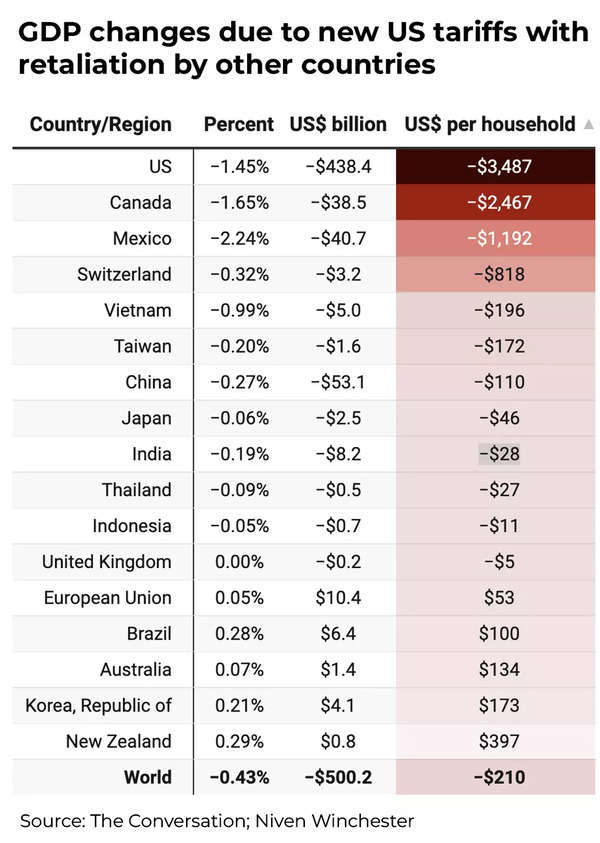
What happens in case of retaliation?
It’s noteworthy to know that China has already announced 34% duty. Trump has reacted sharply to China’s 34% tariff announcement saying, “China played it wrong, they panicked – the one thing they cannot afford to do!”
As is evident, in the case of India the percentage change in GDP would be just around 0.19%, with a negative impact of $28 annually per household. At the current exchange rate, that’s approximately Rs 2396.28 per household in a year.
Another scenario by Niven Winchester illustrates the economic impact when other countries refrain from responding to American tariffs. However, since retaliatory tariffs are already being announced, this scenario is purely academic. The GDP changes for selected nations are shown in the table below.
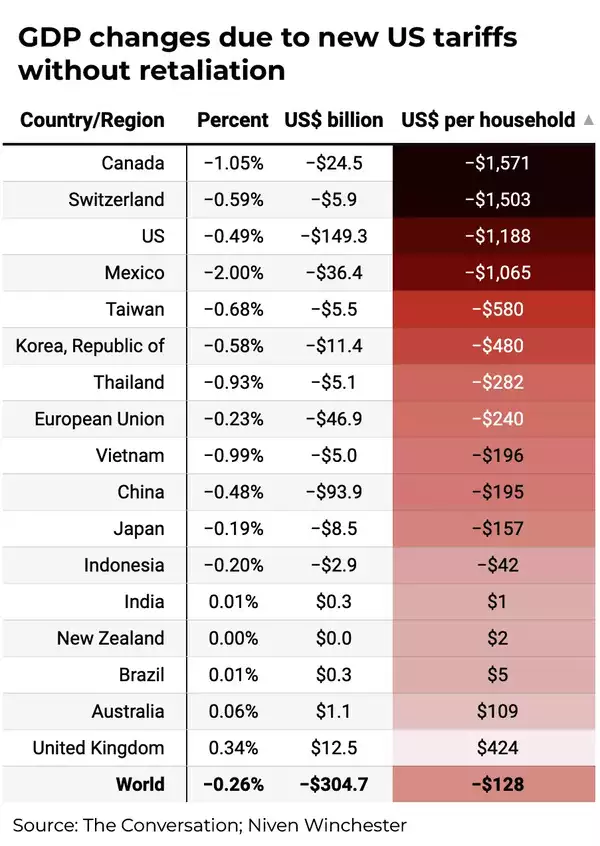
No retaliation scenario
In such a scenario, the impact on India’s GDP would have possibly been positive by 0.01%, translating into a household level positive effect of $1 annually!
Also Read | Is it 26% or 27%? Donald Trump’s reciprocal tariffs on India revised downward to 26% in new White House document
India’s Relative Advantage
According to Sujan Hajra, Chief Economist & Executive Director, Anand Rathi Group, while America’s new reciprocal tariff regime could shake up global trade, India emerges relatively well-placed.
“With lower tariff rates than key peers and a modest impact on exports, India may even gain from supply chain shifts. Domestic growth, inflation, and equities remain on solid ground—turning a global trade headwind into a potential strategic tailwind,” Hajra says.
According to him, even in a worst-case scenario of a 10% decline in exports to the US, the hit to India’s GDP would be limited to around 0.2%.
Despite global trade frictions, with relatively resilient domestic demand and much greater weightage of domestic versus foreign demand, India’s growth is expected to remain robust, in the 6.5-7.5% range over the next 2-3 years, Hajra asserts.
It’s important to note that India’s goods trade surplus with the US, at $50 billion, is far lower than that of China ($320 billion), Mexico ($180 billion), Vietnam ($120 billion), or Germany and Ireland (each at $90 billion). This strengthens India’s case for a negotiated tariff reduction.
Not just that, Hajra also believes that given the low import component of India’s inflation basket, the tariff impact on consumer prices is expected to be minimal.
HDFC Bank in its analysis says that while Trump has imposed universal tariffs, the fact that India faces relatively lower tariffs compared to the likes of China, Vietnam, Thailand etc. provides it with a ‘tariff arbitrage’ that could make India’s exports more competitive.
India’s biggest strength lies in its robust domestic fundamentals and demand-driven growth, with lesser dependency on exports compared to its peers. Additionally, with the Indian and US governments working actively to seal a India-US trade deal in the coming months, the impact of the reciprocal tariffs is likely to be transitory.
Also Read | Is the world staring at a recession? ‘There will be blood’, warn experts on Donald Trump’s reciprocal tariffs impact
